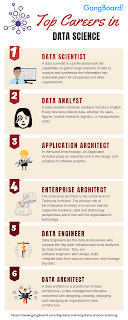Introduction
to Data Science
Data
Science is the territory of study which includes removing bits of knowledge
from immense measures of data by the utilization of different logical
techniques, calculations, and procedures. It encourages you to find concealed
examples from the crude data.
The term
Data Science has developed as a result of the advancement of scientific
measurements, data examination, and enormous data.
Features
of Data Science
·
With
the correct devices, advancements, calculations, we can utilize data and
convert it into a particular business advantage
·
Data
Science can assist you with detecting extortion utilizing propelled AI
calculations
·
It
encourages you to avert any huge fiscal misfortunes
·
Permits
to manufacture knowledge capacity in machines
Through
this blog, we can describe the trends and technologies that are works
with Data Science industry.
Top
most Trends in Data Science
·
Big
Data
·
Blockchain
·
Artificial
Intelligence
·
Cloud
Services
·
Edge
Computing
Big
Data
Big data
is an extremely large data to process and generate information from them. The
data is not necessarily only large. Speed deals with data that moves at high
speed. Continuous flow data is an example of fast data, and when the data
flows too fast it can be like 10,000 messages per 1 microsecond. Precision
deals with structured and unstructured data. Data from unstructured,
time-sensitive or simply too large relational databases cannot be processed.
This type of data requires a different processing method called Big Data, which
uses massive parallelism in easily available devices.
BlockChain
Data
science is an essential part of almost everything, from businesses to local and
national governments. In essence, the goal is to collect and manage data so
that organizations can operate smoothly. For some time now, data scientists
have not been able to share, protect and document the integrity of the data.
Thanks to the excessive handling of Bitcoin, blockchain, the technology that
supports it, won the eyes of data experts. Bitcoin described the decentralized
ledger as an open-source and transparent network guaranteed by strong
encryption accounts.
Here are
several reasons for using Blockchain widely in Data Science,
·
Enhanced
data tracking
·
Real
time analysis
·
Build
trust
·
Easy
data exchange
·
Blockchain
improves data integrity
·
Data
quality confirmed
Artificial
Intelligence
It is
unlikely that the publications created by Artificial Intelligence will vanish
next year. We are in the first and innovative phase of AI, and the following year we will see the most advanced application of AI in all areas. Leveraging
AI will remain a challenge. Smarter applications will be developed using
artificial intelligence, machine learning, and other technologies. Machine
learning (ML) will become popular and transform data science through better
data management. Specific devices for training and the implementation of deep
learning will also be developed.
The
integration of AI will improve decision making and improve the overall work
experience. Other applications and services will increasingly depend on
artificial intelligence to improve the overall experience. All new applications
will incorporate some form of artificial intelligence into their software to
improve their performance. Therefore, the number of smart applications will
increase. Smart things that are smarter versions of normal tools will continue
to flood the market.
Cloud
Services
The complexity of data science is increasing day by day. This complexity is driven
by key factors, such as increased data generation, low-cost storage, and cheap
computing power. In short, we generate more data, we can store it at low cost
and we can run calculations and simulations on this data at a low cost!
Cloud Computing is the fastest-growing field in the world right now. So it is very essential for a data scientist to learning Cloud Computing online training Courses.
The
steps of the iterative workflow generally include:
·
Data
acquisition
·
Data
analysis, munging, problems, conversion, and sterilization.
·
Create,
validate and test models, such as predictions, recommendations, ...
·
Adjust
and optimize models or outputs
Edge
Computing
Edge
computing is a distributed computing model that makes computer data storage
closer to where you need it. The calculation is done largely or completely on
the nodes of distributed devices. ... Edge computing does not need a connection
to any central cloud, although it can interact with one.
As IoT
grows, sophisticated computing will become more common. With thousands of
devices and sensors that collect data for analysis, companies are increasingly
analyzing and processing data near the source of origin. Advanced computing
will increase to maintain proximity to the source of information. The problems
of bandwidth, connectivity, and latency will be resolved through this. Advanced
computing combined with cloud technology provides a coordinated structure that
mimics a service-oriented model. In fact, IDC predicts: "By 2020, the new
cloud pricing models will serve the specific analytical workload, contributing
to a 5-fold increase in the cloud compared to local analysis."
Benefits
of Edge computing
·
Speed
·
Security
·
Scalability
·
Versatility
·
Reliability
Conclusion
Like Big
Data, Data Data will see tremendous use and development next year. The digital
and the physical world will be intertwining more and more. This is just the
beginning, where data science continues to be a catalyst in the changes you
will experience in business and technology. Now it is up to you how to
effectively adapt to these changes and help your business prosper. It is Worth
Learning Data
Science Online Training Courses.






Comments
Post a Comment